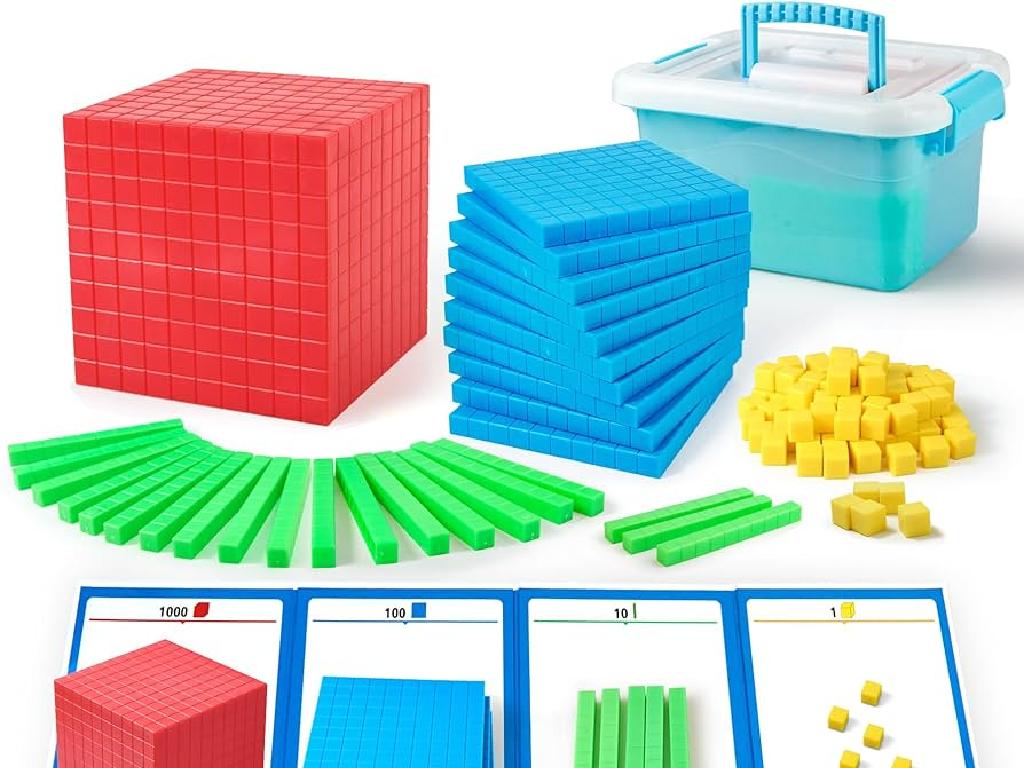Early Mesopotamia
Subject: Social studies
Grade: Sixth grade
Topic: Ancient Mesopotamia
Please LOG IN to download the presentation. Access is available to registered users only.
View More Content
Welcome to Ancient Mesopotamia!
– Mesopotamia: Cradle of Civilization
– Known as the ‘Cradle of Civilization’ for early urban development.
– ‘Mesopotamia’ and its meaning
– Greek for ‘between rivers’, referring to land between the Tigris and Euphrates.
– Birthplace of civilization
– First cities, writing, and laws started here, changing human history.
– Mesopotamia’s legacy
– Its innovations in writing, law, and urbanization still impact us today.
|
This slide introduces students to Ancient Mesopotamia, often referred to as the ‘Cradle of Civilization’ due to its significant contributions to the development of human culture. Mesopotamia, a term derived from Greek, describes the region between the Tigris and Euphrates rivers, which fostered the growth of some of the world’s first cities. It is considered the birthplace of civilization because it saw the emergence of urban development, writing, and codified laws, which laid the foundation for modern society. The legacy of Mesopotamia is evident in many aspects of contemporary life, including our systems of writing, law, and city planning. Encourage students to think about how these ancient innovations continue to influence our world today.
Geography of Early Mesopotamia
– Mesopotamia’s Location
– Situated between the Tigris and Euphrates Rivers
– Significance of the Fertile Crescent
– The Fertile Crescent was rich in nutrients, ideal for farming
– Rivers shaping settlements
– Early communities formed along riverbanks for water access
– Agriculture’s role in development
|
This slide introduces students to the geography of Early Mesopotamia, emphasizing its location between the Tigris and Euphrates Rivers. Highlight the Fertile Crescent’s role in providing fertile land for agriculture, which was crucial for sustaining life and the growth of civilizations. Explain how the proximity to rivers not only offered water for crops but also influenced the establishment of early settlements due to the ease of irrigation, transportation, and trade. Discuss how agriculture was a driving force behind the development and prosperity of Mesopotamian societies. Use maps to help students visualize the region and understand the geographical context of Mesopotamia’s historical development.
The People of Mesopotamia
– Mesopotamia’s cultural mosaic
– A cradle of various ancient cultures
– Sumerians: Pioneers of civilization
– Invented cuneiform writing, built ziggurats
– Akkadians, Babylonians, Assyrians
– Each contributed to Mesopotamia’s legacy
– Trade and cultural exchange
– Ideas spread along trade routes, enriching societies
|
This slide introduces students to the diverse cultures that flourished in ancient Mesopotamia. Highlight the Sumerians as the earliest known civilization in the region, known for their advancements such as cuneiform writing and monumental architecture like ziggurats. Discuss the Akkadians, Babylonians, and Assyrians, emphasizing their unique contributions to Mesopotamian culture, law, and empire-building. Explain how trade routes facilitated the exchange of goods, ideas, and culture, leading to a rich tapestry of shared knowledge and interconnectivity among these ancient peoples. Encourage students to think about how the exchange of ideas can influence and enhance civilizations.
Daily Life in Mesopotamia
– Society roles: men, women, children
– Men were leaders, women managed homes, children helped and learned
– Job types and labor division
– Jobs were based on skills: farmers, traders, priests, scribes
– Mesopotamian agriculture
– Farming was key, with irrigation from Tigris and Euphrates
– Trade and economic practices
– Barter system and later currency facilitated trade
|
This slide aims to give students a glimpse into the social structure and daily activities of early Mesopotamian civilization. Discuss the distinct roles of men, women, and children in society, emphasizing the patriarchal nature but also the significant contributions of each group. Explore the variety of jobs that existed, highlighting how the division of labor was influenced by the region’s resources and needs. Agriculture was the backbone of Mesopotamia’s economy, so explain the innovative irrigation techniques used to harness the Tigris and Euphrates rivers. Lastly, cover the evolution of trade, from simple bartering to the use of currency, and how it contributed to Mesopotamia’s economic development. Encourage students to compare and contrast these aspects with modern society.
Innovations of Early Mesopotamia
– The invention of the wheel
– Revolutionized transport and trade
– Cuneiform writing system
– First system of writing, vital for records
– Advancements in mathematics
– Created the 60-minute hour, geometry basics
– Mesopotamian astronomy
– Tracked celestial bodies, led to calendars
|
This slide highlights the significant contributions of Early Mesopotamia to civilization. The wheel, one of the most famous inventions, greatly facilitated transportation and commerce, changing how societies functioned. Cuneiform, the earliest known writing system, allowed for the recording of history, transactions, and laws, which was essential for the development of complex societies. In mathematics, Mesopotamians laid the groundwork for geometry and created the concept of a 60-minute hour, which we still use today. Their observations in astronomy enabled them to track stars and planets, leading to the creation of calendars and advancing navigation. Encourage students to think about how these innovations affect their daily lives and to discuss the long-term impacts of these ancient advancements.
Religion and Mythology in Early Mesopotamia
– Mesopotamians were polytheistic
– They worshipped many gods representing natural forces and city-states
– Major deities and their functions
– Anu was the sky god, Enlil the god of air, and Inanna the goddess of love and war
– Myths shaped their cultural values
– Stories like the Epic of Gilgamesh taught moral lessons and explained the unexplainable
– Significance of mythology in daily life
– Religious practices and myths influenced governance, law, and seasonal activities
|
This slide introduces students to the complex belief system of the Mesopotamian civilization, highlighting their polytheistic religion. Each god or goddess had a specific role, often linked to natural elements or societal aspects. Myths were not just stories but a way to understand the world and guide daily life. They held significant power over the Mesopotamian people, dictating everything from political decisions to agricultural practices. Encourage students to think about how religion and mythology influence our lives today, drawing parallels to modern society.
The Legacy of Mesopotamia
– Mesopotamia’s influence today
– Innovations from Mesopotamia still shape our world, like the wheel and the calendar.
– Impact of law, writing, architecture
– Hammurabi’s Code, cuneiform, and ziggurats are lasting contributions.
– Archaeology preserving history
– Excavations help us uncover the civilization’s secrets and understand their daily life.
– Understanding our past
|
This slide aims to highlight the significant contributions of Mesopotamian civilization to the modern world. Discuss how Mesopotamian innovations, such as the wheel and the calendar, are still in use today. Explain the importance of Hammurabi’s Code as one of the first written laws, the invention of cuneiform as one of the earliest writing systems, and the distinctive architecture of ziggurats. Emphasize the role of archaeology in uncovering artifacts and structures that allow us to piece together Mesopotamian history and culture. Encourage students to reflect on how these ancient advancements laid the foundations for many aspects of our current society and legal systems.
Class Activity: Create Your Own Cuneiform Tablet
– Learn about cuneiform writing
– Gather clay or playdough and a stylus
– Use a pencil if you don t have a stylus
– Craft a message in cuneiform
– Try writing your name as ancient scribes did
– Share your cuneiform creation
– Present your tablet to the class
|
This hands-on activity is designed to give students a practical understanding of cuneiform, one of the earliest systems of writing from ancient Mesopotamia. Provide students with clay or playdough and a stylus or pencil to etch into their tablets. Guide them through the process of inscribing their name or a simple message using cuneiform script. This will help them appreciate the effort it took to communicate in ancient times and the importance of writing in the development of civilization. After creating their tablets, students should present their work to the class, explaining the message they chose to inscribe. This activity fosters creativity and engagement with historical content.






